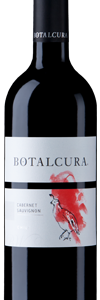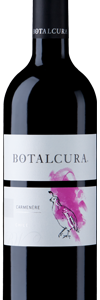An outstanding wine with distinctive quality and unique style that reflects the maximum potential of the Carménère variety. Pehuén is a limited production wine crafted from the finest grapes of a single vineyard in the Apalta Valley. This one of the kind wine is an assemblage of 90% Carménère from the Apalta Valley and 10% Syrah from the Limarí Valley. Winemaker’s intuition which drove to perfect balance between climate, soil, and vineyard age allows Pehuén to reflect the maximum potential of the Apalta terroir with a touch of the dry Limarí Valley.
Viticulture
The viticulture of the Carménère variety: The vineyard was planted in 1938 on a south-facing slope in the mid-section of the Apalta Valley hills, 5,500 plants per hectare. The vineyard is dry farmed (un irrigated) and only receives water through winter rainfall, which averages 700 mm (27.5 in) per year, and contributions from the basin. The contributions of the basins during the spring allow the canopy to develop appropriately and quickly enter into a situation that is restrictive but sufficient for proper maturation. Poor granitic soils provide good drainage, which in turn controls plant vigor and ensures proper fruit production. Given its position on the slopes, it has very good solar exposure and no clusters damage due to sun overexposure. Despite the naturally low yield, poorly positioned bunches and weak shoots are eliminated early in the season. Prior to harvest, defective bunches are eliminated to ensure that only the best are vinified.
The viticulture of the Syrah variety: The vineyards were low density planted (1,785 plants/hectare) in 1997 and now yield 3,500 kg/ha (1.8 kg/plant). The soils are typical of the second Limarí Valley terrace and consist of alluvial depositions with a first stratum of clay texture and a second of clay-loam with stones. Calcium carbonate deposits between the strata are responsible for the high pH in the soil and limit the effective depth, which can vary from 20 to 50 cm (8–20 in), and reduce water permeability in the soils. The management strategy aims to always maintain good light within the canopy, at both the bunch level and in the interior and also to stop growth prior to the onset of veraison to ensure good concentration and ripening of the grape bunches.
Vinification
Harvested in the second half of April, the grapes are destemmed, partially crushed, and underwent a 5-day cold soak prior to fermentation. The must was then inoculated with selected yeasts and fermented at 28ºC (82ºF). All of the potential of the skins was extracted through frequent pump-overs (remontage) during the first two-thirds of the process and then reduced by half. A 20-day post-fermentation maceration lent sweetness and a well-rounded character to the wine. Frequent pump-overs (remontage) during two-thirds of the fermentation process are then reduced to half in order to extract all of the potential from the skins without adding aggressive notes to the final wine. A 20-day post-fermentation maceration lends the sweetness and roundness that characterize the wine.








